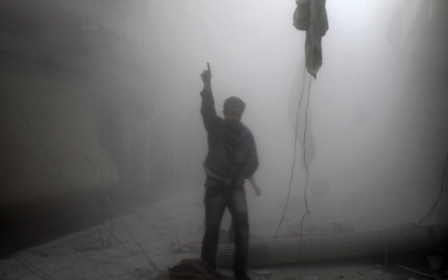Aleppo aid convoy hit by 'multiple aircraft strikes', says UN

A United Nations internal inquiry released on Wednesday found that "multiple types of munitions deployed from more than one aircraft and aircraft type" struck an aid convoy in Syria in a deadly September attack.
The inquiry said at least 10 people died and some 22 people were injured in the September attack on the UN and Syrian Arab Red Crescent convoy at Urem Al-Kubra near the northern city of Aleppo, which also destroyed 17 trucks.
The inquiry said it was unable to identify the perpetrator, though it noted that only Syrian, Russian and US-led coalition aircraft had the capability to carry out such an attack, not opposition forces.
It said it was "highly unlikely" that US-led coalition aircraft were involved in the attack.
The munitions used during the 30-minute assault may have included missiles, rockets and small bombs, it added.
The board rejected allegations that the attack could have been carried out by direct fire or a ground assault in the rebel-held area.
It added it had received reports that three Syria helicopters and three aircraft were "highly likely" to have perpetrated the attack and that a Russian plane was also suspected of being involved.
"However, the board did not have access to raw data to support these assertions and, in their absence, it was unable to draw a definitive conclusion," it said.
Russia and Syria rejected their involvement in the attack. Moscow blamed the attack on "terrorist" groups operating in Aleppo.
Meanwhile, the UN General Assembly on Wednesday voted to establish a team to "collect, consolidate, preserve and analyze evidence" as well as to prepare cases on war crimes and human rights abuses committed during the conflict in Syria.
The General Assembly adopted a Liechtenstein-drafted resolution to establish the independent team with 105 in favour, 15 against and 52 abstentions. The team will work in coordination with the UN Syria Commission of Inquiry.
Middle East Eye propose une couverture et une analyse indépendantes et incomparables du Moyen-Orient, de l’Afrique du Nord et d’autres régions du monde. Pour en savoir plus sur la reprise de ce contenu et les frais qui s’appliquent, veuillez remplir ce formulaire [en anglais]. Pour en savoir plus sur MEE, cliquez ici [en anglais].




